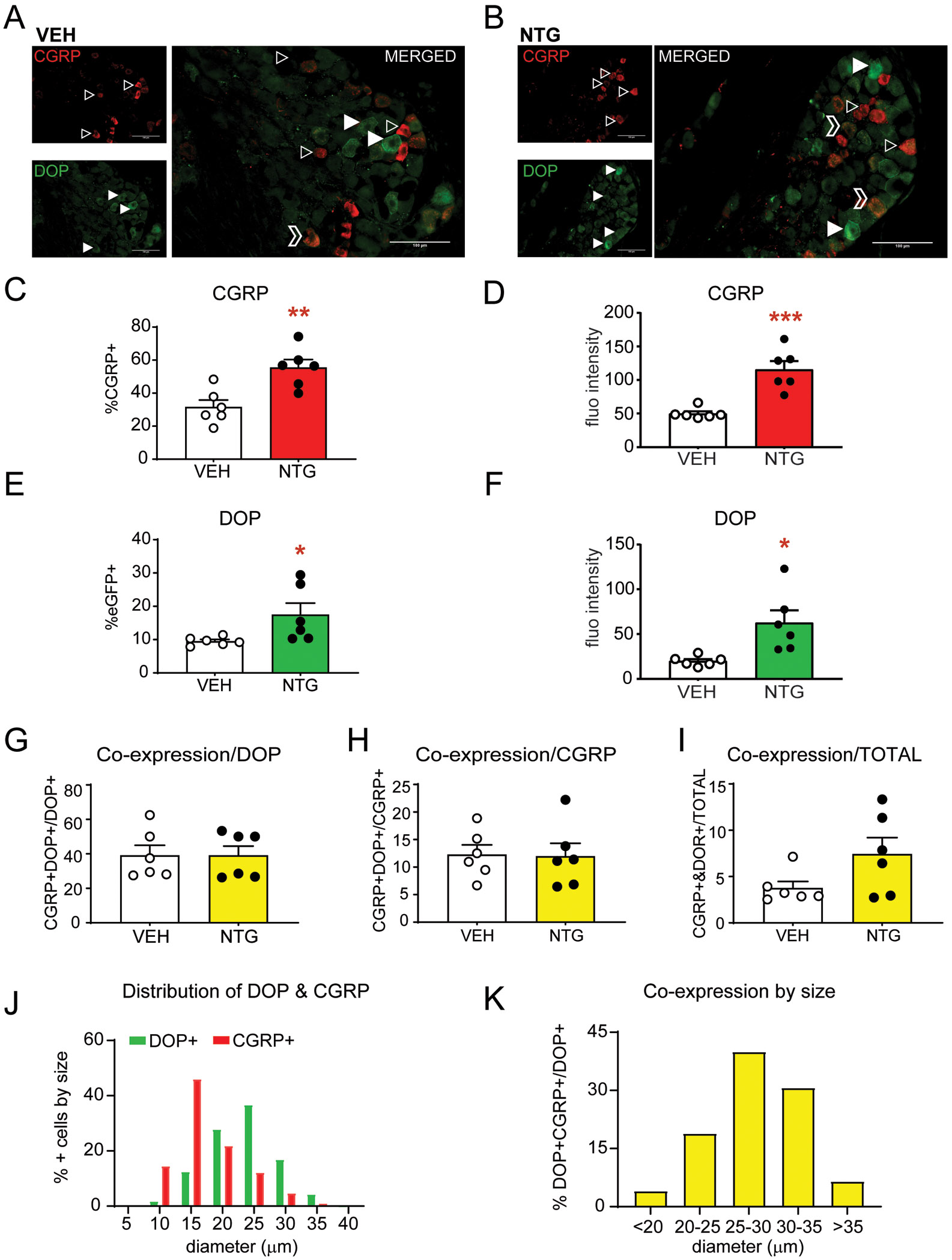Figure 3:

Chronic NTG increases CGRP and DOP expression in the trigeminal ganglia. DOPeGFP mice were treated chronically with VEH/NTG as described above and tissue was collected on day 10. Representative images of DOPeGFP+ and CGRP+ cells in the trigeminal ganglia after chronic (A) VEH and (B) NTG. Outlined arrowheads point to CGRP+ cells and filled in arrowheads point to DOP+ cells. Outlined chevrons point to cells co-expressing CGRP and DOP. Between 200-500 cells were quantified across multiple sections for each mouse. Chronic NTG increased (C) the percentage and (D) expression of CGRP+ cells in the TG of DOPeGFP knockin mice. Chronic NTG also increased (E) the percentage and (F) expression of DOP+ cells in the TG. *p<0.05, **p<0.01, ***p<0.001 t-test. Of the DOP+ cells ~40% were also CGRP+ (G), of the CGRP+ cells ~12% were DOP+ (H), and of the total cell population ~5% co-expressed CGRP and DOP (I). This co-expression was not altered by chronic NTG treatment. (J) Distribution of DOP+ and CGRP+ afferents by cell diameter (μm) shows that these two proteins are largely expressed in different cell populations. (K) DOP+CGRP+ co-expression analyzed by size shows that larger diameter cells show increased co-expression relative to the total DOP+ cell population in each size range. Chronic migraine-associated pain increases both CGRP and DOP and there is some co-expression of this peptide and receptor.
